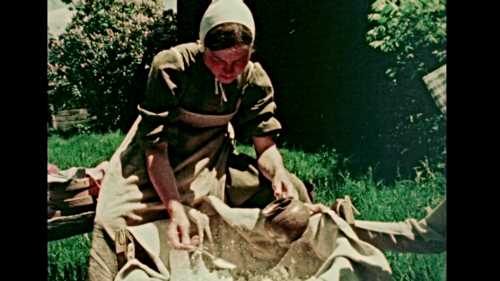On the brink of turning 70, Ken Burns will release his very first film, “Working in Rural New England,” which he made as an undergraduate at Hampshire College. The 28-minute docu will be released July 25 on UNUM, Burn’s American history digital platform on PBS.
About Old Sturbridge Village, an outdoor history museum in Massachusetts that re-creates life in rural New England from 1790 through the 1830s, the docu was commissioned by the museum in 1973. The film served as Burns’ senior thesis at the liberal arts college in nearby Amherst, Mass. Accompanying the doc on UNUM is a pre-recorded conversation between Burns and New York Times literary critic A.O. Scott.
“It in some ways does not look like a Ken Burns film,” Scott says during his conversation with Burns. “It’s moving images in the present day, in color. So, it doesn’t immediately say to a modern viewer, a film by Ken Burns. There are no pans across black-and-white photographs. But as soon as I got into the first few minutes (of the film) I thought well this is completely a Ken Burns movie. These actors for Sturbridge Village are in a sense doing the work that the still photographs would do in your later films. They are carrying you into and putting into motion a historical reality.”
The doc, shot on 16mm ektachrome, was shown at Old Sturbridge Village’s visitor center for school groups and general visitors on a rotating basis through the ‘70s and part of the ‘80s.
“I was lamenting that the film didn’t really exist,” Burns says. “They only had a scratched-up copy that they had shown by a projector. Then, a few years ago, I found a release print that hadn’t been projected. So, we scanned it and basically recreated it. It doesn’t look anywhere near as gorgeous as the original film, but it was enough. It feels good to revisit that time.”
The director says that while “Working in Rural New England” was made 50 years ago, it still informs his current work.
“I learned a lot about myself while making this film,” says Burns. “I learned how to write a proposal. I learned how to write, make and keep a budget. I learned how to shoot as a cinematographer. I learned how to pitch and do presentations. I learned how to edit. All of the skills that I needed to be a filmmaker were tested on this project.”
Burns followed “Working in Rural New England” with his first feature documentary, “Brooklyn Bridge,” which earned him an Oscar nomination in 1981. That was followed by a decades long career chronicling events and influential figures in American history. After the success of 1990’s “The Civil War,” Burns became a PBS mainstay, making docuseries including “Baseball” (1994) “Jazz” (2001), “The War” (2007) and “The Dust Bowl” (2012) “The Vietnam War” (2017), and “The U.S. and the Holocaust” (2022).
Despite being his inaugural film effort, there is no part of the project that makes him cringe.
“It’s sort of like going back in your own photo albums and seeing yourself wearing something that you would not be caught dead in today,” he says. “You don’t take the picture out and rip it out. You just think, that was me. So, I look at the film and I say, that was me. Also, it’s a good film, but I’m not anxiously waiting for the reviews to come out.”
UNUM on PBS is designed to provide historical context to current issues and highlight themes throughout American history to advance a more complete understanding of our past, present and future.
Read More About:
Source: Read Full Article


